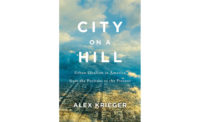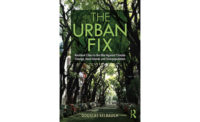Author Lizabeth Cohen frames Ed Logue as a Greek tragic hero, and it’s easy to see why. Logue’s leadership in major postwar planning and urban-development schemes in New Haven, Boston, and New York fit this narrative nicely: a precipitous rise in power, prodigious accomplishments, noble intentions along with hubris and missteps, and finally a virtual exile.
Logue was born in Philadelphia, attended Yale for college and law school and had stints as a union organizer and political attaché before his first post as head of the New Haven Redevelopment Agency (NHRA) in 1953. Cohen recounts his changes in thinking and practice as he vaulted from head of the NHRA to that of admin- istrator of the Boston Redevelopment Authority in 1960, and finally, in 1967, the president and CEO of New York’s Urban Redevelopment Authority (UDC).
Logue’s work in New Haven involved classic blunders of wholesale neighborhood clearance and displacing residents because the experts knew better. Yet in Boston he became more sensitive to context and the viability of adaptive reuse, in part due to some vehement community opposition. By the time Logue came to New York’s UDC, he was largely out of the demolition business altogether, trading the wrecking ball for the scalpel in his urban excisions and increasingly dexterous in handling urban infill.
In each of his leadership roles, Logue brought in young, talented, and racially diverse planners. These staffs, Cohen makes clear, were skilled at wrangling government and private funds for redevelopment. In 1965, New Haven received the sixth-highest amount of federal redevelopment funding, far out of proportion to its size. In New York, the UDC obtained over 60 percent of all national Section 236 funding, which provided 1 percent interest rates for low- and middle-income multifamily construction.
Most important, Logue would get things done, melting the glacier of civic inertia wherever he was located. By selling bonds as well as giving low-interest loans, the UDC created projects totaling $1.5 billion (over $7 billion in today’s dollars) by the beginning of 1975. In New York state, the UDC built 117 housing developments, including more than 33,000 units, for 100,000 residents (one-third low income, the rest subsidized for moderate- and middle-income families). Project fast-tracking, “before all the final funding, permitting, designing, and bidding were securely in place,” she writes, attracted severe scrutiny once Nelson Rockefeller resigned as governor in 1973. Yet Twin Parks in the Bronx and Roosevelt Island housing still stand out as better-than-average mixed-income housing.
Logue enlisted notable architectural talents, including Josep Luis Sert, Paul Rudolph, Henry Cobb, I.M. Pei, Ulrich Franzen, and James Polshek, although he was pilloried for squandering funds on modern caprices. Nevertheless, the cost of these projects was rarely very high, and his choices remain a credit to all of their cities.
By the time of Logue’s last, largely overlooked post as president of the South Bronx Redevelopment Corporation (1978–85), where he confronted the most intense poverty with the fewest resources he had ever possessed, he had become an earnest champion of local groups.
Cohen’s background as a labor historian shows in her depiction of power structures and community resistance following postwar urban renewal, but she does give close attention to the buildings themselves. Ultimately, hers is not merely a history but a reminder—in the face of current decaying infrastructure and inadequate affordable housing—of the need to closely study government redevelopment efforts of the past.






Post a comment to this article
Report Abusive Comment